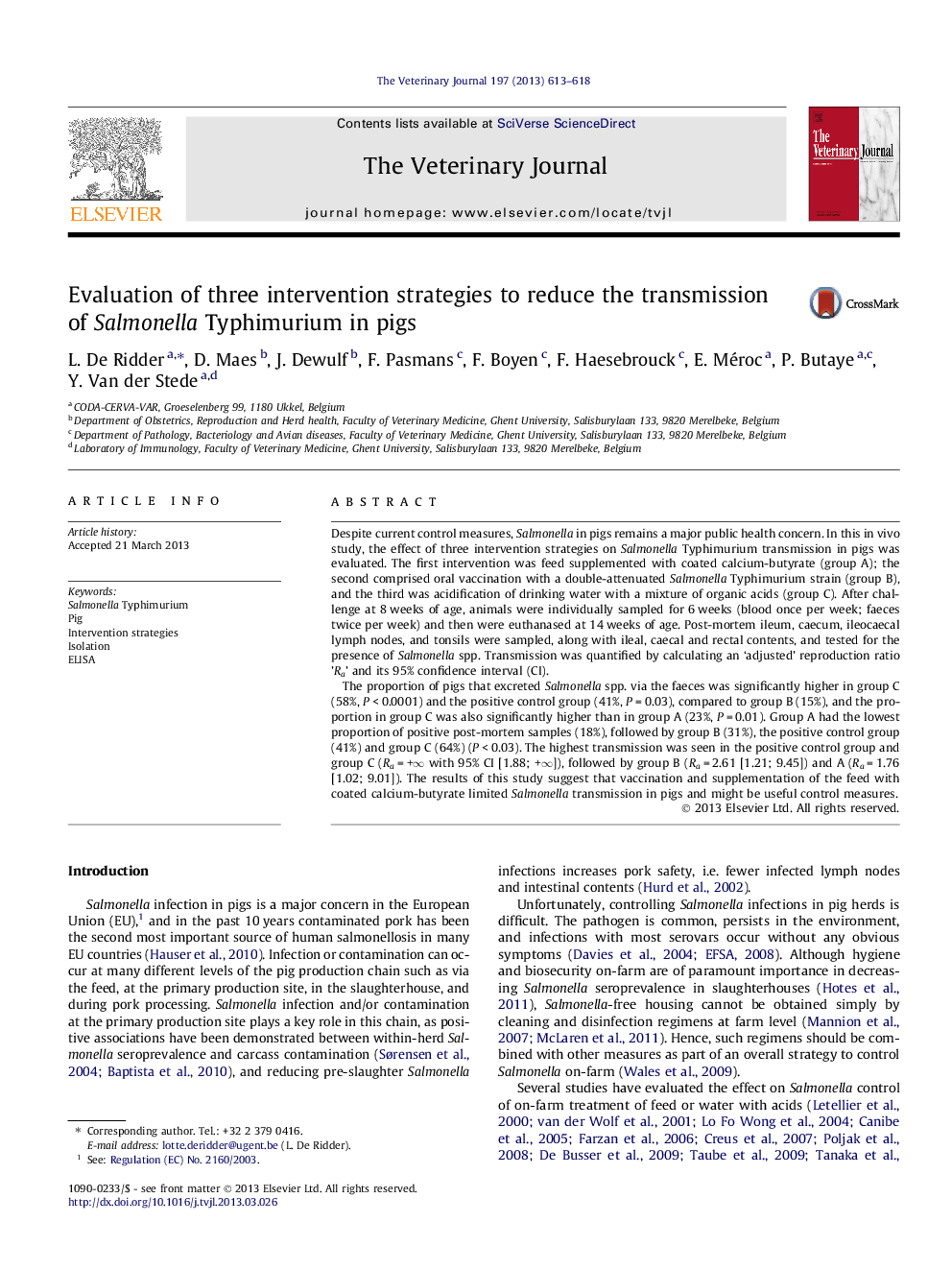| Article ID | Journal | Published Year | Pages | File Type |
|---|---|---|---|---|
| 5799139 | The Veterinary Journal | 2013 | 6 Pages |
Despite current control measures, Salmonella in pigs remains a major public health concern. In this in vivo study, the effect of three intervention strategies on Salmonella Typhimurium transmission in pigs was evaluated. The first intervention was feed supplemented with coated calcium-butyrate (group A); the second comprised oral vaccination with a double-attenuated Salmonella Typhimurium strain (group B), and the third was acidification of drinking water with a mixture of organic acids (group C). After challenge at 8 weeks of age, animals were individually sampled for 6 weeks (blood once per week; faeces twice per week) and then were euthanased at 14 weeks of age. Post-mortem ileum, caecum, ileocaecal lymph nodes, and tonsils were sampled, along with ileal, caecal and rectal contents, and tested for the presence of Salmonella spp. Transmission was quantified by calculating an 'adjusted' reproduction ratio 'Ra' and its 95% confidence interval (CI).The proportion of pigs that excreted Salmonella spp. via the faeces was significantly higher in group C (58%, P < 0.0001) and the positive control group (41%, P = 0.03), compared to group B (15%), and the proportion in group C was also significantly higher than in group A (23%, P = 0.01). Group A had the lowest proportion of positive post-mortem samples (18%), followed by group B (31%), the positive control group (41%) and group C (64%) (P < 0.03). The highest transmission was seen in the positive control group and group C (Ra = +â with 95% CI [1.88; +â]), followed by group B (Ra = 2.61 [1.21; 9.45]) and A (Ra = 1.76 [1.02; 9.01]). The results of this study suggest that vaccination and supplementation of the feed with coated calcium-butyrate limited Salmonella transmission in pigs and might be useful control measures.
